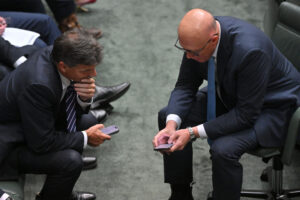Fuel excise cut: bad policy and not worth as much as advertised
Halving the fuel excise is bad for the environment and for most Australians won’t deliver the cost-of-living benefits that are being spruiked.
The announcement today that the Liberal Party will halve the fuel tax excise for one year if it wins the election in May is, alas, yet another of the many policies put in place over the years that encourage the use of fossil fuels. At a time when all political parties should be working to reduce emissions, this policy does the exact opposite.
But while that is bad enough, the dollar benefit to an “average Australian” would seem to be much less than $750 per year suggested by the opposition leader.
The opposition have told reporters that the $750 figure is based on filling up a 55L tank once a week. Now, if you have a pretty standard petrol car that gets around 8.2l/100km that means driving 670km a week. That is a lot of driving for anyone living in the city.
And so it is not surprising that most surveys estimate that people fill up their car a lot less than once a week.
Budget Direct Car Insurance in 2022 surveyed road users and found that only a quarter of Australians filled up once a week – some more than that, but around two-thirds of drivers filled up only once a fortnight or less. For those drivers, the benefits of this halving of the rebate is much less than $750.
We used the example of a 55l car and a $0.25 cut in the excise to work out the annual savings for each type of car user. Those who use 55l a week save $13.75 a week (55l x $0.25) which ends up being $715 a year (not $750).
But because most people will not save that amount, the overall average savings per year for average Australians is just $466.75 – less than the total $536 tax cut proposed by the ALP.
However, these figures are likely conservative. The Car Direct survey was done in 2022 – since then there has been a higher uptake of hybrid and electric vehicles. Consider that if you have a standard hybrid car fuel efficiency is around 4l/100km – which means it would take $1,375km before you need to fill up.
The policy is geared toward helping people who have fuel-inefficient cars, and those who drive long distances. If you use public transport to commute, the benefit is smaller. If you work from home, the benefit is smaller. If you ride a bike to work, the benefit is smaller. If you don’t have a car, you get no benefit at all.
The policy not only is terrible for the environment, but it also fails even as a true cost-of-living measure as most households will find they aren’t getting as much of a benefit as they are being told.
Between the Lines Newsletter
The biggest stories and the best analysis from the team at the Australia Institute, delivered to your inbox every fortnight.
You might also like
10 reasons why Australia does not need company tax cuts
1/ Giving business billions of dollars in tax cuts means starving schools, hospitals and other services. Giving business billions of dollars in tax cuts means billions of dollars less for services like schools and hospitals. If Australia cut company tax from 30% to 25% this would give business about $20 billion in its first year,
The Liberal Party defies its own history on tax
For decades, the Liberal Party has prided itself on being the “party of lower taxes”.
5 ways and 63 billion reasons to improve Australia’s tax system
With a federal election just around the corner, new analysis from The Australia Institute reveals 63 billion reasons why our next Parliament should improve the nation’s tax system.



